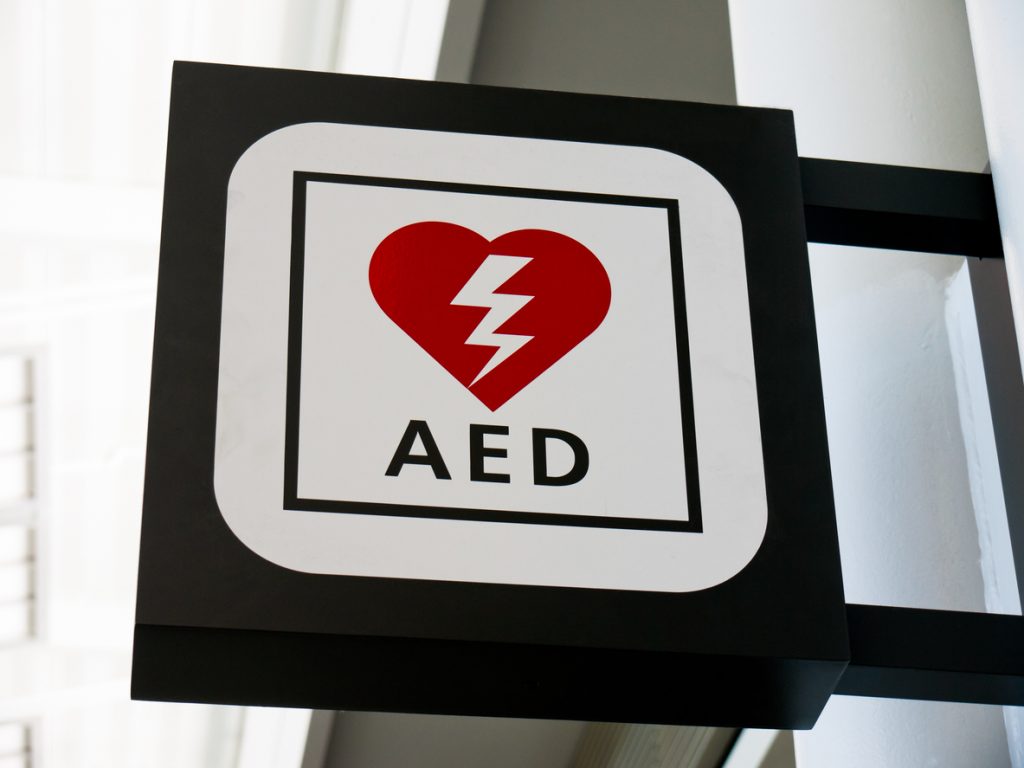
What is an AED?
A first-aid tool called an Automated External Defibrillator is a device used to restore normal heart rhythm after cardiac arrest. Out of every ten people who have a cardiac arrest, only one will survive. A cardiac arrest is a condition where the heart stops beating, and it’s the result of either a very severe blockage in the heart’s arteries or a problem with the heart’s electrical system.
An AED is something your AED and CPR-C first aid trained responder should carry during a cardiac arrest. It can be used by anyone in a life-threatening situation to resuscitate a patient, even non-medically trained personnel. The AED provides voice instructions on its use and reads the patient’s heart rhythm through his or her skin.
How AEDs Work
The AED is an automated version of the medical technique of cardiopulmonary resuscitation (CPR). With CPR, a AED and CPR-C first aid trained rescuer will apply pressure to the chest in a bid to force blood out of the heart and into other parts of the body. After that, the rescuer will perform chest compressions, which is squeezing the heart again to force blood out of it.
However, an AED does this automatically and continuously. It does the compressions and monitors the heart for a normal rhythm. If there’s no heartbeat, it will begin performing CPR.
The device first applies the electric shock to the patient’s chest wall. It then begins monitoring the heart rhythm. If a normal heartbeat is detected, it ceases performing CPR. However, if a normal heartbeat is not detected after the shock or after a few minutes, it automatically performs CPR.
This process continues until the patient regains a normal heartbeat or until professional help arrives.
How To Use An AED
An AED should be used only after attempting resuscitation via CPR. Professional EMS personnel may have other protocols and equipment, including a stretcher and emergency medications, so procedures vary.
Tips on Using AED for First Aid
i. If an AED is available, Here are some tips on how to use it for the first time:
ii. Remove the plastic cap from the AED and make sure that it is on the highest setting.
Then press the call button.
iii. Clothing should be removed if necessary, and you should support the patient’s chest with one hand while holding the AED’s handle with the other.
iv. If you hear a beep, the AED has detected a heartbeat.
v. Start CPR by pressing the button on the AED that corresponds with chest compressions and breaths.
vi. Stop CPR only if you hear another beep or someone else takes over the AED.
vii. After a minute, check the patient’s heart rhythm again.
viii. If no pulse is detected, continue CPR.
ix. If a normal heartbeat is detected, you can stop CPR.
v. You can unplug the AED when emergency personnel arrive.
Mistakes to Avoid When Using AEDs
i. Never use an AED on a patient having a heart attack.
When a person has a heart attack, the heart’s arteries are blocked by a clot. This results in a sudden loss of blood flow to the brain and other vital organs, causing pain in the chest. The person will most likely suffer chest pain, shortness of breath, and possibly loss of consciousness. If you think that a patient has a heart attack, you need to get him to the nearest emergency room immediately.
ii. Never attach an AED to a patient unless you have been trained on its use. If in doubt, check the AED’s owner’s manual.
iii. Never attempt defibrillation yourself if you are unsure of what to do. Call for professional medical help first.
iv. Do not remove the external pads from a patient’s skin until the AED is unplugged.
v. Do not take off the AED’s plastic cap until it is plugged into a power outlet.
vi. Do not disconnect the AED if you are in doubt about its condition.
vii. Do not leave the AED on for more than 15 minutes, as it can overheat and damage the settings.
viii. Do not turn it on if there is a patient at its pads.
ix. Do not use the AED for anything other than CPR.
x. Do not reprogram or try to fix the settings of an AED by yourself. With first aid training, you can do many things to help a person. However, if you have an AED, you should never hesitate to use it. It can save a person from dying from cardiac arrest, and it can also make the rest of the process of treatment easier for medical professionals.

